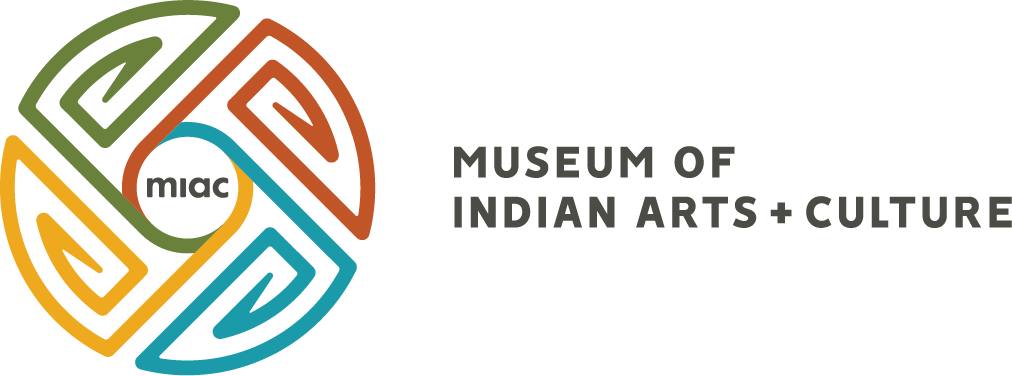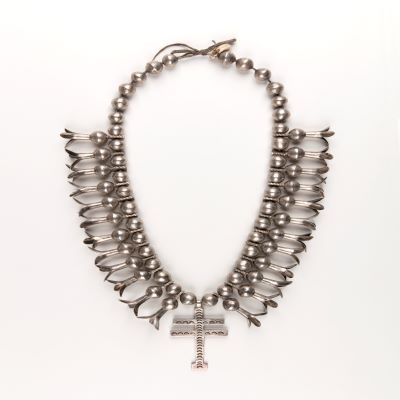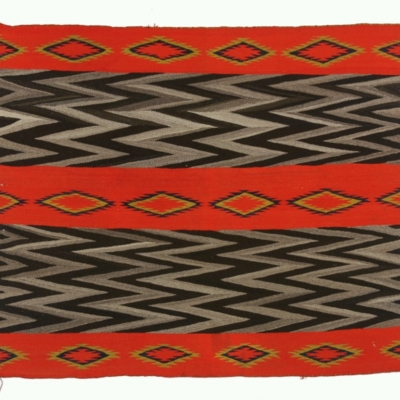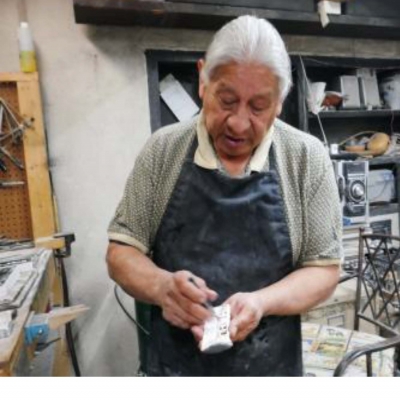Past Exhibitions
Turquoise, Water, Sky: The Stone and Its Meaning
April 13, 2014 through May 30, 2016
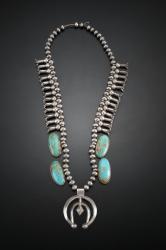
Squash-blossom necklace
Squash-blossom necklace, 1920–39, Navajo, maker unknown. Silver, Turquoise Mountain turquoise. Museum of Indian Arts and Culture/Laboratory of Anthropology (45626/12). Photograph by Blair Clark.
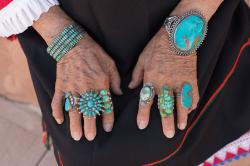
Large single cabochons and clusters of smaller stones on bracelets and rings
Large single cabochons and clusters of smaller but precisely cut stone ornament Southwestern bracelets and rings. These pieces of jewelry date from the 1910s to the present and show turquoise at its best. (Courtesy of the Museum of Indian Arts and Culture/Laboratory of Anthropology. Photograph by Kitty Leaken.)
Turquoise, Water, Sky: The Stone and Its Meaning highlights the Museum’s extensive collection of Southwestern turquoise jewelry and presents all aspects of the stone, from geology, mining and history, to questions of authenticity and value.
People in the Southwest have used turquoise for jewelry and ceremonial purposes and traded valuable stones both within and outside the region for over a thousand years. Turquoise, Water, Sky presents hundreds of necklaces, bracelets, belts, rings, earrings, silver boxes and other objects illustrating how the stone was used and its deep significance to the people of the region. This comprehensive consideration of the stone runs through May 2, 2016.
View the online version of the exhibition at http://turquoise.indianartsandculture.org
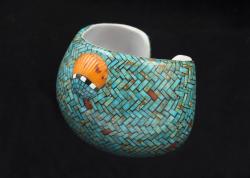
Contemporary Artistic Expressions
Angie Reano Owen of Santo Domingo used Red Mountain turquoise inlaid on shell to create this contemporary cuff (Cat #55381/12, 3.5 by 2.5 inches). The techniques and materials, however, have been used for at least a thousand years by Native Southwestern turquoise artists.
